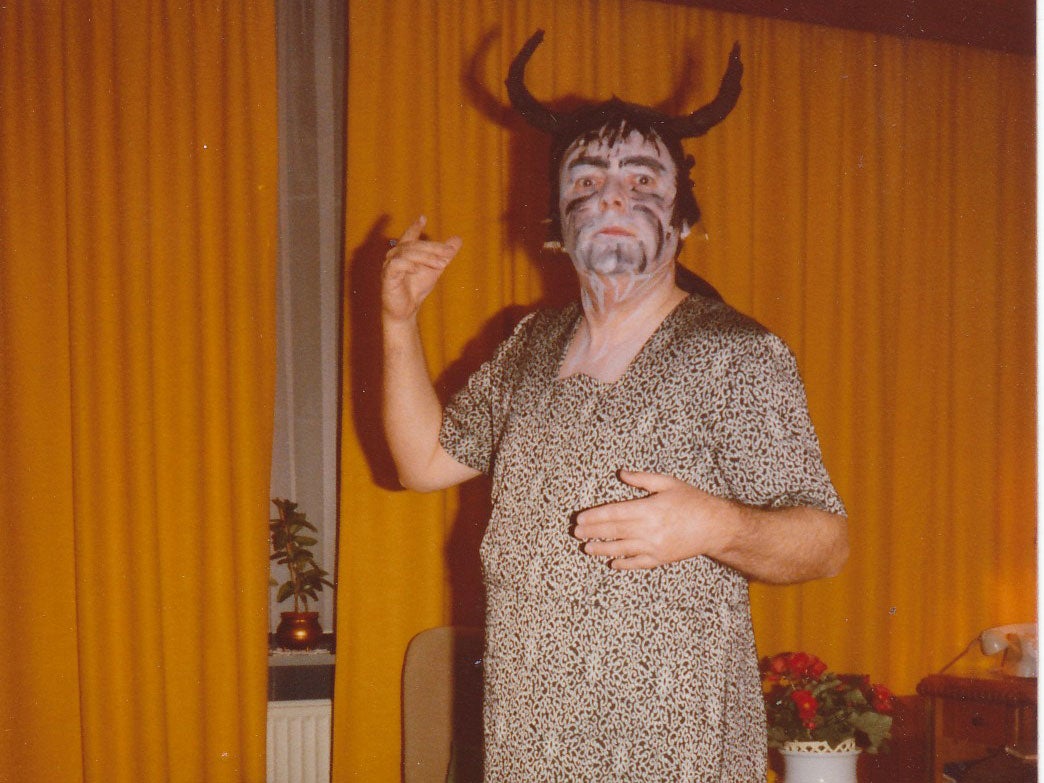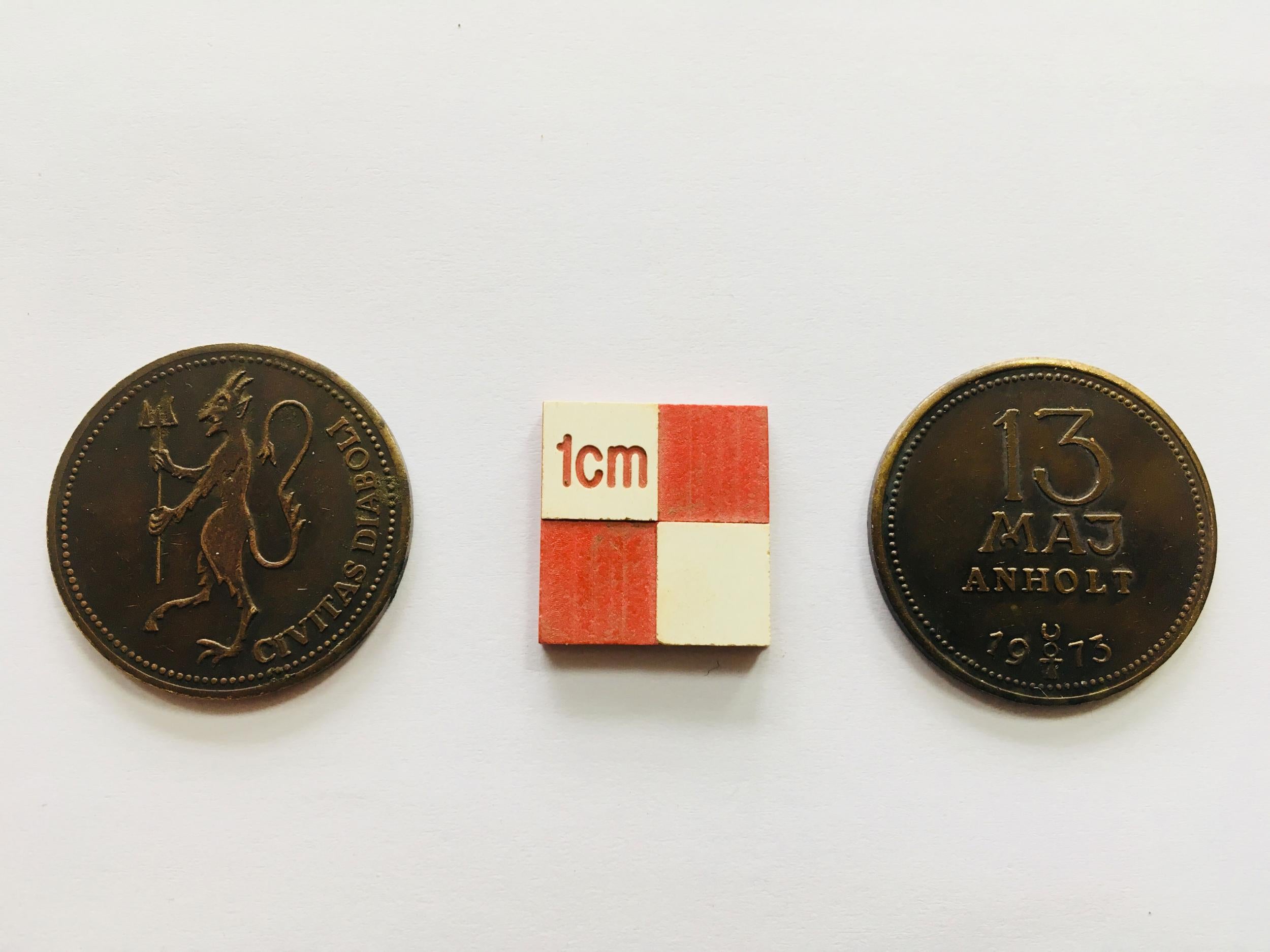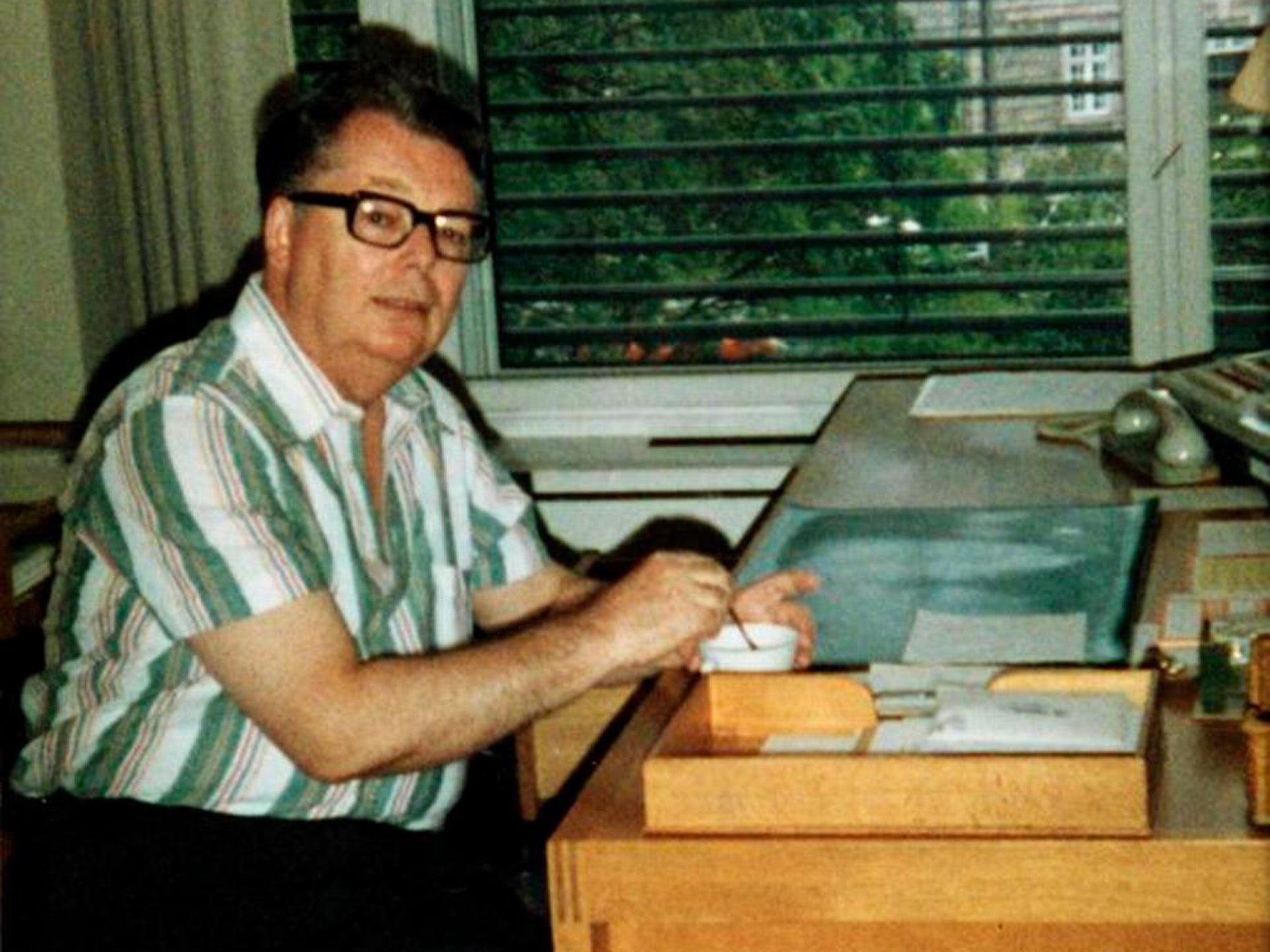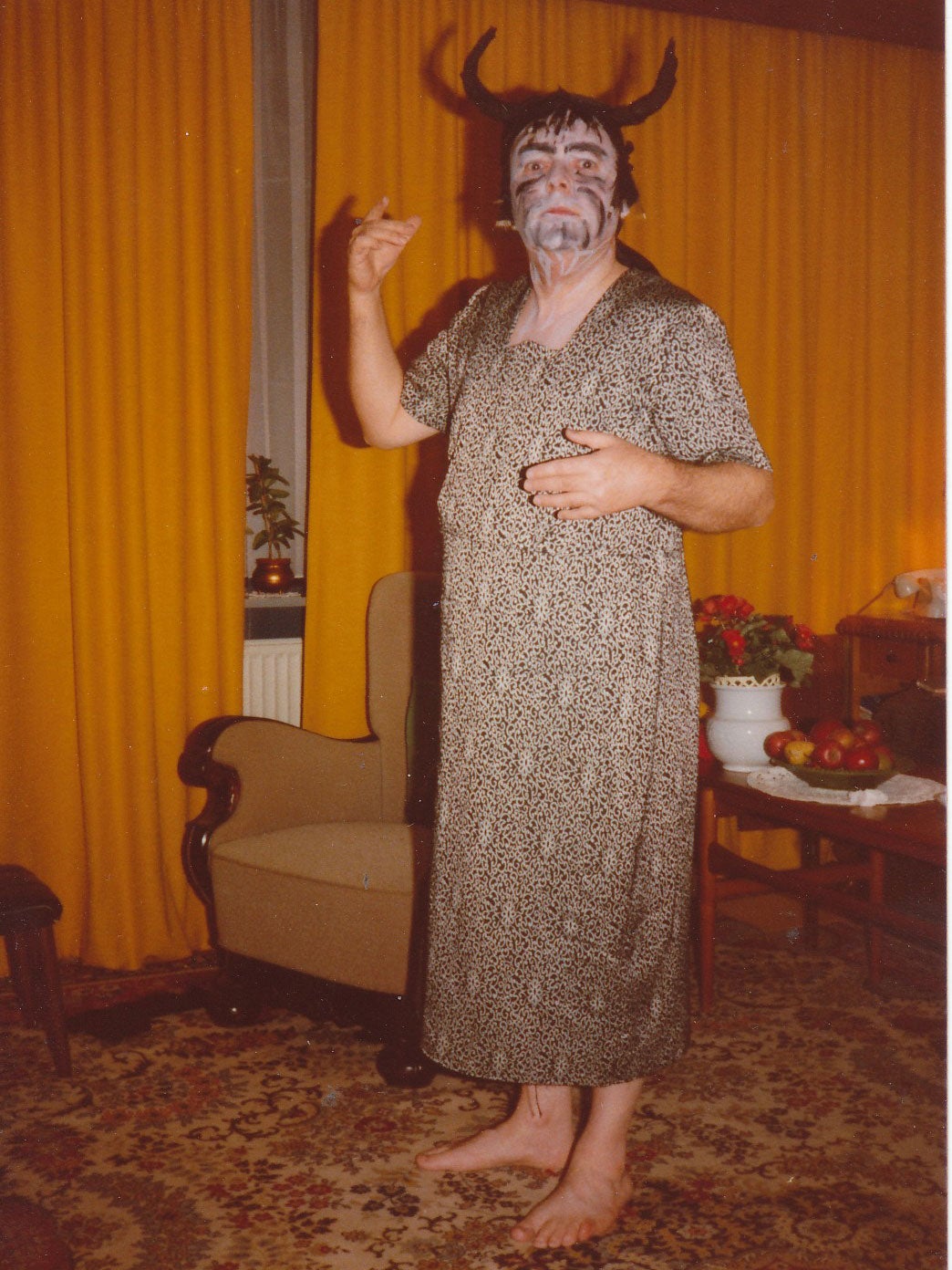Devil coins found at Bath Abbey prove 'prank of the century' reached Britain
Featuring the image of Satan and the words 'Civitas Diaboli', the coins are the result of a multinational practical joke masterminded by a mild-mannered art gallery clerk from Denmark

Your support helps us to tell the story
From reproductive rights to climate change to Big Tech, The Independent is on the ground when the story is developing. Whether it's investigating the financials of Elon Musk's pro-Trump PAC or producing our latest documentary, 'The A Word', which shines a light on the American women fighting for reproductive rights, we know how important it is to parse out the facts from the messaging.
At such a critical moment in US history, we need reporters on the ground. Your donation allows us to keep sending journalists to speak to both sides of the story.
The Independent is trusted by Americans across the entire political spectrum. And unlike many other quality news outlets, we choose not to lock Americans out of our reporting and analysis with paywalls. We believe quality journalism should be available to everyone, paid for by those who can afford it.
Your support makes all the difference.“Devil coins” featuring the image of Satan and found at Bath Abbey are proof that the UK was targeted in a legendary multinational prank orchestrated by a mild-mannered Danish art gallery clerk, it has been revealed.
The two coins feature an image of a horned, cloven-hoofed, trident-carrying devil and the words “Civitas Diaboli” (city of the devil). They were found when recent renovation work at Bath Abbey allowed archaeologists to look beneath some 19th century stalls.
The archaeologists found some relatively unremarkable small change and a complete order of service from Tuesday 15 May 1902, but were amazed and baffled to discover a pair of coins carrying the image of Satan.

There have been churches on the site of the abbey since 757, but the Wessex Archaeology team knew immediately they were not on the trail of some hitherto unknown Medieval devil worshippers: the reverse side of the coins were inscribed “13 Maj Anholt 1973”.
Further research revealed that the two coins are believed to be the first to have reached Britain from a practical joke that began in Denmark in 1973.
Sometimes referred to by Scandinavians as “the prank of the century”, the elaborate and extraordinary hoax began on the remote Danish island of Anholt.
In May 1973, at around the time of a full moon, islanders began finding signs of Satanic rituals in an isolated area they called “the desert”.
As the Norwegian academic Jesper Aagaard Petersen later wrote – in a paper entitled Operation Mindf***, Viking Edition – there were Polynesian-looking masks, bones wrapped in string, and a fake human head on a stake that was planted in the sand through a child’s sandal strap.
A police officer was ordered to take the ferry from the mainland to Anholt (some six months before the release of the film The Wicker Man, starring Edward Woodward as a detective sent to investigate strange goings on a small Scottish island).
The (non-fictional) Danish policeman carefully catalogued and photographed the items, while talking to the islanders.
Some seemed terrified. One told the policeman she was now frightened to go out at night because “you can never know if the devils want to see blood”.
At least one islander was vowing that come the next full moon, he would be ready with a loaded gun and willing to shoot anything that moved. Although when the ethnographer Bente Alver visited along with a horde of journalists in June 1973, she reported that the islanders seemed calm about the Satanists seemingly in their midst. Since there was freedom of religion in Denmark, the islanders apparently argued, it was none of their business, as long the devil worshippers cleared up after themselves.
The journalists were considerably more excited, claiming to have uncovered evidence of human sacrifice, until the alleged victim contacted the police to point out that she was alive, unsacrificed and living on the Danish mainland.
And then, as the first wave of “Satanism on Anholt” stories started dying down, the “devil coins” started appearing. For years, people kept on finding them: in church crypts, behind statues, even on one occasion behind paintings at the police headquarters in Copenhagen.
So far, some 370 devil coins have been found, many in Denmark, but also abroad, in tourist destinations around Scandinavia. The Bath Abbey coins, though, are believed to be the first found in the UK.
Strange letters were also discovered or sent. The director of Rosenborg Castle, home to the Danish crown jewels, received an outsize human tooth in the post.
The accompanying letter asked him to “find a place for the Divine Tooth in the display with the crown jewels”, before the writer changed their mind and demanded: “Actually, it should be entirely on its own on a tray of pure gold.”
Sometimes the letters purported to be from the Satanic high priestess Alice Mandragora. On other occasions they came from a Karl Klunck or Dunk Wokgnal.
Some of them could be quite chilling. When Keld Grinder-Hansen wrote some scholarly articles about the devil coins his brother had found while inspecting a statue in 1981, a letter was sent to his home address telling him the Satanists would come to drink “blood soup” with him.
“I was a young and sensitive guy,” he later recalled, “And I have to admit I was scared.”
And yet for decades, no one could quite work out what was going on. It was only in 2013, in an in-depth expose serialised over six days, that the Danish broadsheet newspaper Politiken revealed the truth: it had all been a massive practical joke perpetrated by one Knud Langkow, a hitherto unremarkable telephone clerk at the National Gallery of Denmark.
Langkow had died nine years before in 2004 aged 73, seemingly taking the secrets of his prank and his alter egos of Alice Mandragora and Dunk Wokgnal – his name written backwards – to his grave.

His former colleagues at the gallery, where he had worked until retirement in 1991, were stunned. This was the man who had been shunted into a narrow room to operate the gallery’s then antiquated telephone system, who had reportedly been made to spend 25 years working in a small office overlooking some birch trees – even though he was allergic to birch pollen.
In the summer, his small office got so hot he regularly had to retreat to the toilets to splash water over his face, returning to work with a damp shirt.
In what at the time had been a deeply hierarchical workplace, this lowly clerk had been almost completely anonymous.
“It’s perfectly crazy that it’s him,” said Chris Fischer, one of the few former gallery workers to remember Langkow, when Politiken’s reporters told him the truth. “He was completely ordinary, quite conventional and grey.”
But despite his neatly pressed trousers and “gentle thoroughness”, it seems that Knud Langkow hid a mischievously subversive eccentricity.

His niece Lene Langkow Saaek told Politiken that, despite his obvious intelligence, the young Knud’s education had been cut short by financial hardship that forced him to find work to help his family make ends meet.
Had he found more fulfilling work, his niece speculated, he might not have devoted so much time and effort to his extraordinary prank.
Her uncle, she recalled, had been an atheist with “an elevated, intelligent sense of humour”.

“I think normality annoyed him,” she said. “He did not like ordinary.
“He did it to make fun of the bourgeoisie and to get people out of their chairs and to wonder.”
And, she added: “He wanted to leave his mark on the world.”

In that he certainly succeeded. Individual devil coins can fetch more than £100 at auction, and as Politiken reported, they are now treated as artefacts in their own right, exhibited by no less an institution than the National Museum of Denmark.
Some Danish museum curators refer to the totality of Langkow’s Satanic creations, hidden objects and letters as a Gesamtkunstwerk – a universal work of art.
And now, 14 years after his death, and 45 years after starting his prank, Langkow has certainly made a group of British archaeologists stop and think.
“As archaeologists we set great store by the integrity of the physical objects we recover,” admitted Bruce Evans, the project manager leading Wessex Archaeology’s investigations at Bath Abbey. “To discover finds that are a fabrication, designed to mislead, is both fascinating and a timely reminder that we should always view any discovery with a critical eye.”
Back in Denmark, Ms Langkow Saaek, a 66-year-old teacher, told The Independent she was delighted the effects of the once ignored clerk’s prank were now being felt in Britain.
“He was an adorable man, a good and thoughtful uncle,” she said, “Both an ordinary man and an intriguing personality. He did a great thing, and it is great that his story and his name will be remembered.”
Join our commenting forum
Join thought-provoking conversations, follow other Independent readers and see their replies
Comments